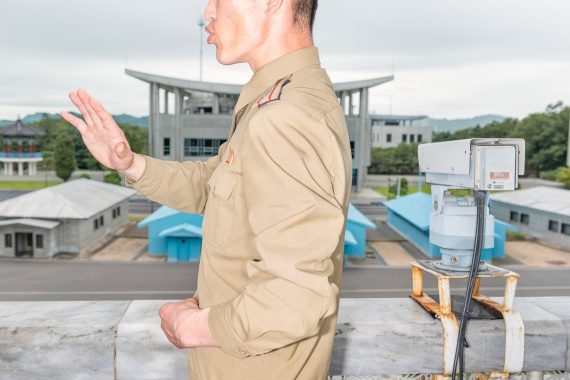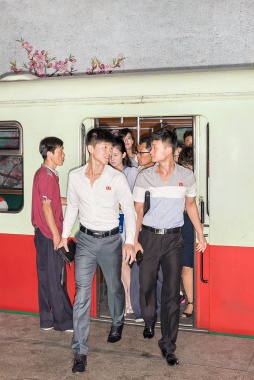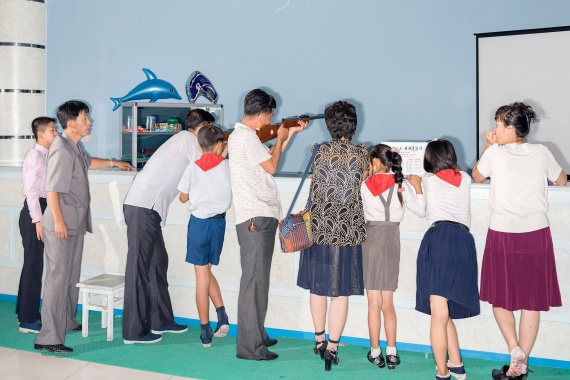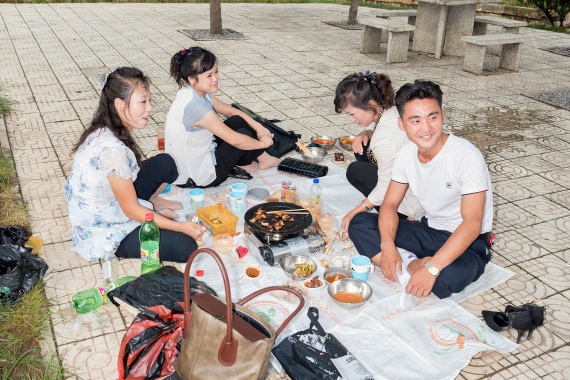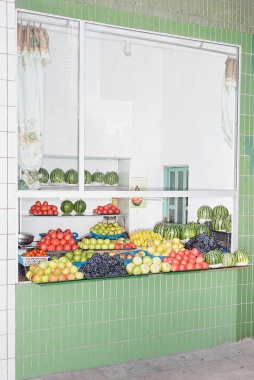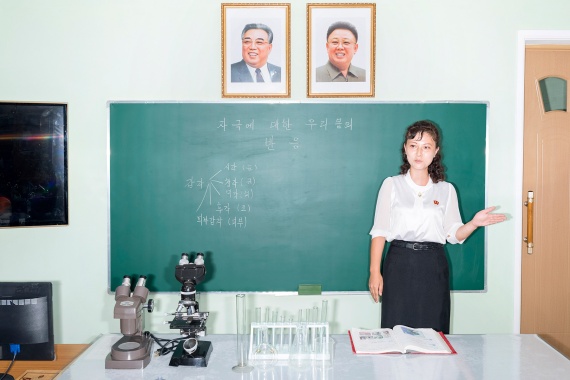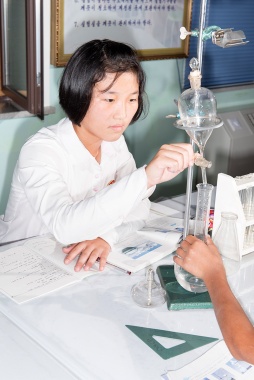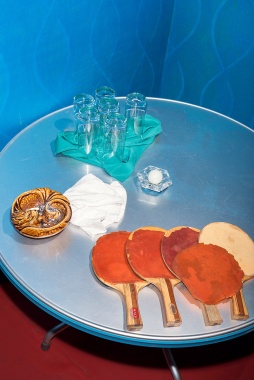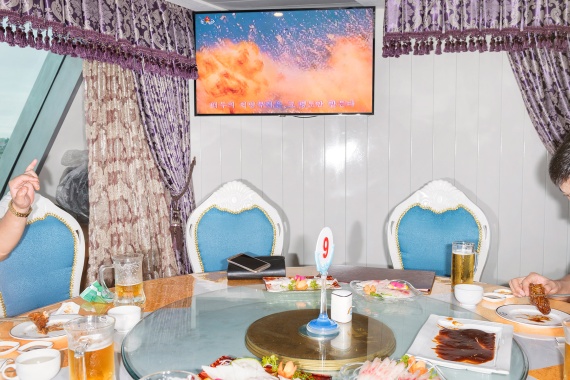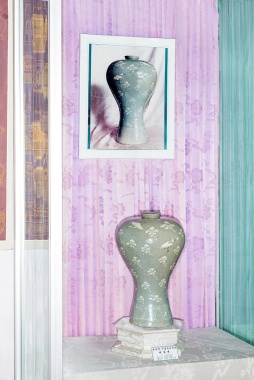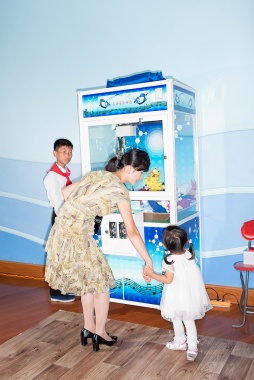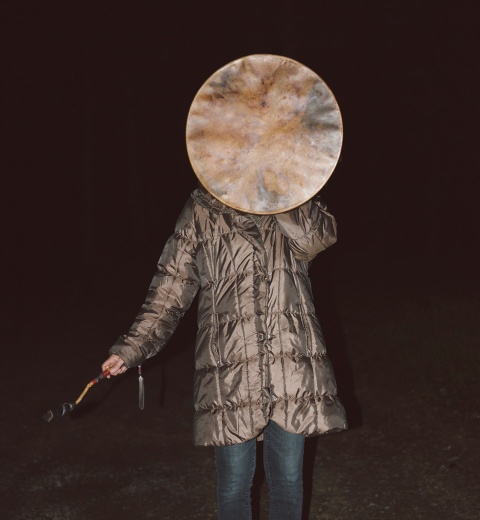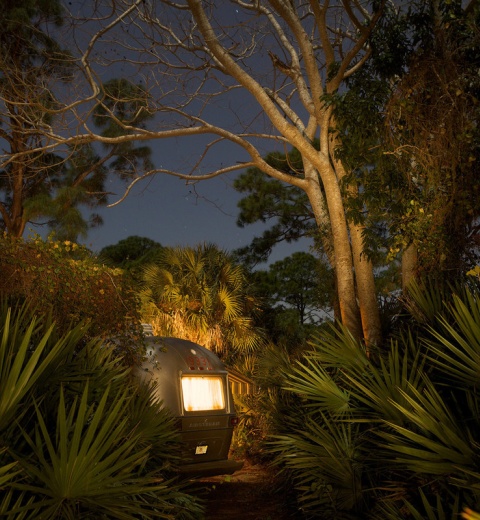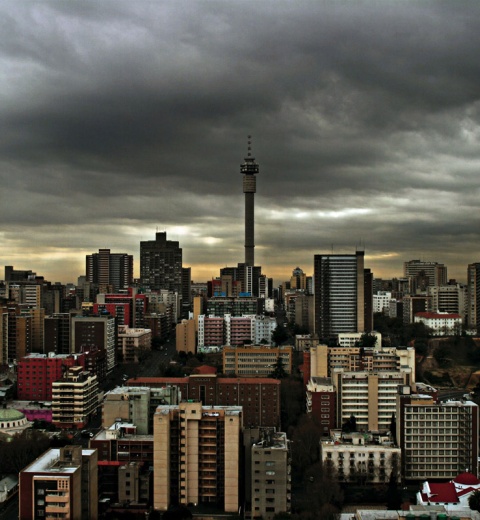Max Pinckers – Red Ink, 2018
Independent photographs that bear witness to the reality of life in the insular country that is North Korea are few and far between. With his “Red Ink” series, the winner of the 2018 Leica Oskar Barnack Award opens up another chapter – revealing a staged version of reality under the Kim regime.
It was a historic day: on June 12, 2018, after a lot of back and forth, a first meeting was held between the U.S. President and the incumbent ruler of North Korea. For that one day, it seemed as though the ‘Supreme Leader’, Kim Jong-un, had become the greatest superstar on the planet; for a brief moment, the media almost forgot that he is at the head of one of the most bizarre dictatorships in history. Beginning in 1948 with the founding of the Democratic People’s Republic of Korea, inspired by the teachings of Marxism and Leninism, it was not long before the country had been transformed into a military autocracy, with the Kim family dynasty sitting at the very top. Kim Il-sung, the founder, was followed by his son Kim Jong-il in 1994; next in succession was the grandson, Kim Jong-un, in 2011. In 2014, the United Nations accused the isolated country of crimes against humanity, many of which were perpetrated against its own starving population. A network of internment and re-education camps stretches across this country that, with a population of only 24 million, has an army of over one million: the camps for political prisoners alone are said to hold around 200 000 people under unimaginably horrendous conditions.
“There’s a subversiveness that creeps into this kind of constructed situation. You can never really put a finger on it. You’re never really sure of anything,”
Foreign journalists and photographers are rarely allowed into North Korea, and those who do receive access are under constant surveillance. Max Pinckers was no exception. On assignment for The New Yorker, he spent a few days in the country in 2017 with journalist Evan Osnos. A programme had been laid out for them: national holiday celebrations in Pyongyang; a visit to the border with South Korea; and an outing to Kaesong, the capital of the Goryeo Kingdom from the 10th to the 14th century, from which the name Korea can be traced. Pinckers reports that all the places they visited had been carefully prepared in advance. Yet, within those parameters, he was able to photograph anything he felt like. The minders who accompanied him never even demanded to see his pictures. He knew, however, that “it would be impossible to catch a glimpse behind the regime’s facade, which is why I chose an aesthetic approach where I worked with extremely bright, artificial light, somehow reminiscent of state propaganda.” By using this method, he hoped that the images themselves would reveal their deceptive character.
“In my documentary practice I’m always looking for ways in which to create work of a self- reflexive nature, where the very language of photography itself is questioned: how can I make photographs that are conscious of their own construction?”
The name of the series is a reference to Slavoj Žižek’s book “Welcome to the Desert of the Real,” Pinckers explains. “It opens with a joke explaining the classic paradox of self-reference: in an old joke from the defunct German Democratic Republic, a German worker gets a job in Siberia. Aware of how all mail will be read by the censors, he tells his friends, ‘Let’s establish a code: if a letter you get from me is written in ordinary blue ink, it’s true; if it’s written in red ink, it’s false.’ After a month, his friends get the first letter, written in blue ink: ‘Everything is wonderful here: the shops are full, food is abundant, apartments are large and properly heated, cinemas show films from the West, there are many beautiful girls ready for an affair – the only thing you can’t get is red ink.’”
(Text updated 2020)
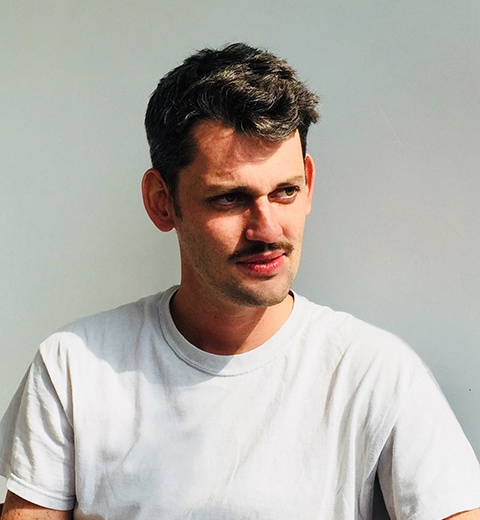
Max Pinckers
Born in Brussels in 1988, the Belgian photographer uses his work to explore strategies of visual storytelling in documentary photography. Pinckers studied at the Royal Academy of Fine Arts in Ghent from 2008 to 2012. Since then, he has published several books, exhibited nationally and internationally, and founded Lyre Press Publishers. He was previously a LOBA finalist in 2016 with his series, “Two Kinds of Memory and Memory Itself”. He self-published “Red Ink” in 2018. Currently he is a Doctoral Researcher for Arts at the KASK & Conservatorium School of Arts, Hogent & Howest, Ghent.
Portrait: © Victoria Gonzalez-Figueras
